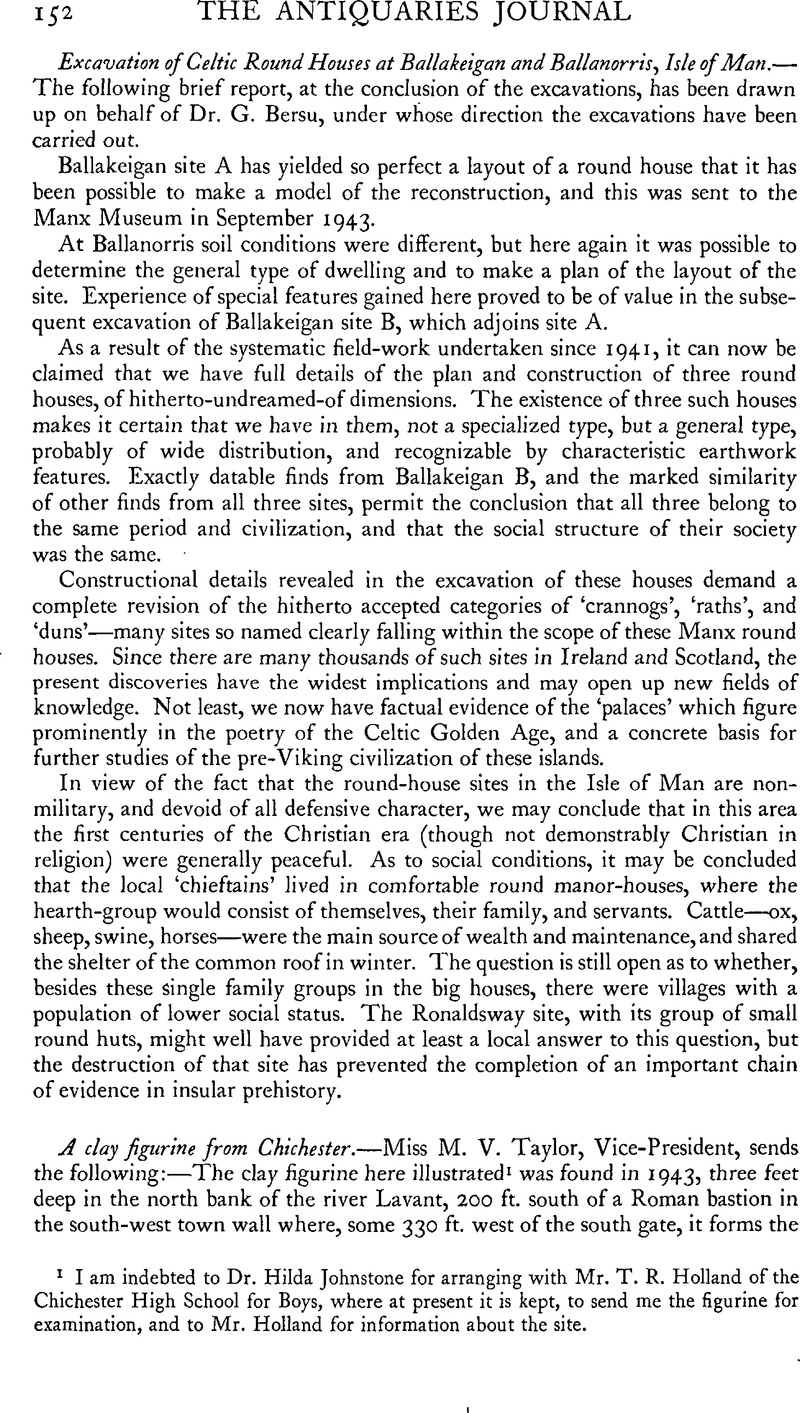No CrossRef data available.
Published online by Cambridge University Press: 08 January 2012

page 152 note 1 I am indebted to Dr. Hilda Johnstone for arranging with Mr. T. R. Holland of the Chichester High School for Boys, where at present it is kept, to send me the figurine for examination, and to Mr. Holland for information about the site.
page 153 note 1 This external Roman bastion was excavated in 1885, as Dr. Johnstone points out. See G. M. Hills in Brit. Arch. Assoc. Trans., xlii, 1886, 131 ff., hence Winbolt in Vict. Co. Hist. Sussex, iii, 12.
page 153 note 2 A brief note in the Sussex County Magazine, October 1943, also mentions the discovery.
page 153 note 3 Cf. Sammlung Niessan Cöln (1911), i, nos. 3182, 3183, 99, ii, pl. cviii. The apparent necklace may, however, be merely the top of an undergarment.
page 153 note 4 Cf. Tudot, E., Collection de figurines en argile, œuvres premières de l'art gaulois (Paris, 1860), no. 72 F.Google Scholar
page 153 note 5 I am indebted to Dr. Paul Jacobsthal for this and other suggestions.
page 153 note 6 It is unlikely that she is Minerva, as has been suggested. The round object on the breast seems to be an ornament and not the Gorgon's head, and the helmet, shield, and spear, usually shown on terra-cottas of Minerva, are absent.
page 154 note 1 The earliest well-illustrated account of the figurines is that by E. Tudot mentioned above. He describes a number of moulds and figures found in the lower Allier valley at Toulon-sur-Allier near Moulins and elsewhere in the Bourbonnais. The first and best critical account of the industry and objects made is by A. Blanchet, ‘Étude sur les figurines en terre cuite de la Gaule romaine’, in Mémoires de la Société Nationale des Antiquaires de France, 6e sér. i, 1891, 65 ff., and ‘Supplément’, ibid, x, 1901, 189 ff. Many figurines exist in the S. Germain Museum and some apparently were published by H. A. Mazard, Étude descriptive de la céramique du Musée de St. Germain-en-Laye (1875), which I have not been able to consult. French Museums indeed are full of these terra-cottas. M. Blanchet does not illustrate all the types he mentions and there are many more besides; therefore a well-illustrated catalogue of all the types found, or at any rate of all the deities, is much to be desired. C. R. Smith, Collectanea Antiqua, vi (1868), 48 ff., published many of Tudot's illustrations and gives the best account available in English. For other references see Schumacher in Lindenschmidt, Die Altertümer unserer heidnischen Vorzeit, v, 1911, 380 ff., and for a collection at Salzburg (Iuvavum), Klose and Silber, Iuvavum (Wien, 1929), 73 ff.